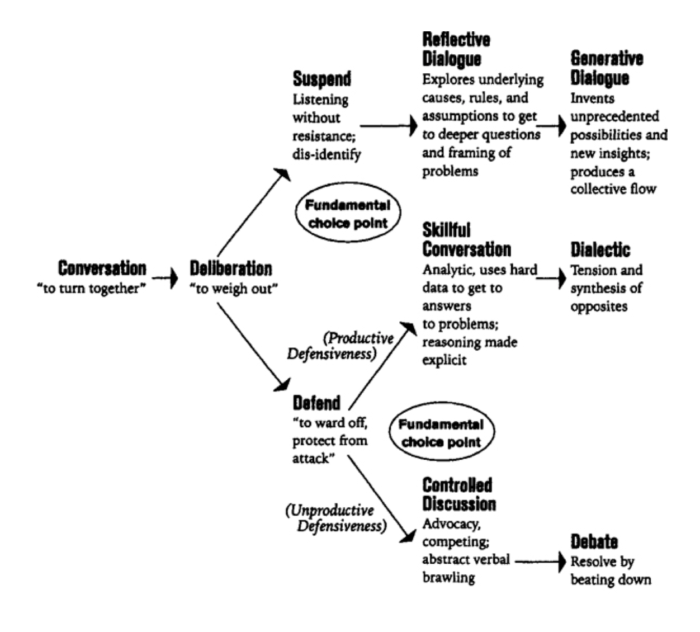
Dig this. It’s a diagram from a great book called “Dialogue: The Art Of Thinking Together”
I’m reading a book that was suggested to me by the Director of the Office of Learning in the US Forest Service as “required reading” for any modern organization that intends to learn – Dialogue: The Art Of Thinking Together
As a teaser, William Isaacs makes a very good case for considering discussion to be seen as different from dialogue.
He gives one way of thinking about the two:
Many of us believe that truth emerges after we take two conflicting ideas and somehow smash them together. The resulting spark is supposed to shed light on the situation. But more often than not, what actually happens is that one party simply beats the other down. A discussion attempts to get people to choose one of two alternatives. A dialogue helps to surface the alternatives and lay them side by side, so that they can all be seen in context.
Discussion is not always without merit though. Done well, it provides the benefit of breaking things into parts in order to understand them more clearly. A “skillful discussion” seeks to find some order among the particles while they are still “hot.” It involves the art of putting oneself in another’s shoes, of seeing the world the way she sees it. In skillful discussion, we inquire into the reasons behind someone’s position and the thinking and the evidence that support it. As this kind of discussion progresses, it can lead to a dialectic, the productive antagonism of two points of view. A dialectic pits different ideas against one another and then makes space for new views to emerge out of both.
Later on in the same chapter is this nugget:
Discussion is about making a decision. Unlike dialogue, which seeks to open possibilities and see new options, discussion seeks closure and completion. The word decide means “to resolve difficulties by cutting through them.” Its roots literally mean to “murder the alternative.”
Dialogue is about exploring the nature of choice. To choose is to select among alternatives. Dialogue is about evoking insight, which is a way of reordering our knowledge– particularly the taken-for-granted assumptions that people bring to the table.
